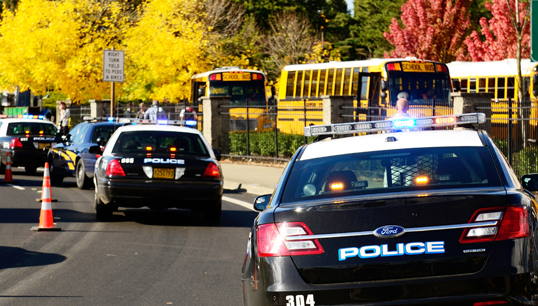Blog
Tips for Better School Emergency Operations Plans
by Paul Kazlauskas

Families expect schools to keep their children safe, be they from human-created threats (violence, crime) or naturally-occurring dangers (natural disasters, disease outbreaks). Lessons learned from past school emergencies highlight the importance of preparing school officials and first responders to implement emergency operations plans. By having those security plans in place to keep students and staff safe, schools play a key role in responding appropriately to an emergency and reducing its impact.
In April 1999, news of the shooting at Columbine High School in Colorado prompted schools across the country to create emergency operations plans and crisis teams to deal with a similar incident. Teams were trained, additional security was implemented, and everyone felt ready. Fortunately, most of the schools haven’t had to act on their plans in the 17 years since. The immediate fear of April 20, 1999 being repeated began to fade after a few months. Consequently, these emergency plans may not have been revisited and reviewed for changing circumstances and now these plans may be out-of-date.
Here are some ideas to help with the creation and review of school emergency operations plans to make sure the best security procedures are implemented.
- School emergency operations plans should address topics such as:
- Lockdowns
- Evacuations
- Parent-student reunification plans
- Communication procedures with parents (what type of media to use, frequency of communications, etc.)
- Communication protocols for dealing with the media
- Assembling of grief counselors
- Annually review and address gaps in the school emergency operations plans with proper changes to procedure and implement any new physical security tools deemed necessary.
- Run frequent drills of various types of emergency situations to make sure the security protocols put on paper work when applied in real-life scenarios. The drills should be practiced in as realistic a way as possible. Full-scale simulation drills are very valuable learning exercises.
- If full-scale simulation isn’t possible because of expense or time availability, school security teams can use table-top exercises. These are stress-free simulations that allow for school emergency teams to talk through scenarios and the roles of members during the crisis.
- School officials should meet at least twice a year with their public safety partners: police, fire, emergency medical services, Red Cross, etc., to discuss emergency planning strategies. For example: identify potential staging areas for parents, medical personnel, media members, and others who will come to the school in an emergency.
The last bullet above is particularly important. The public safety partners mentioned should also have a hand in creating the security policies. They are trained professionals in this arena and will be invaluable assets. The public safety partners should have certain information about the schools in their files, such as detailed floor plans and a complete list of entrances and exits.
Preparation, communication, and training are three important critical success factors for school emergency operations planning teams. Developing, maintaining, and practicing the emergency plans empower employees in an incident to act quickly and knowledgeably. In addition, the plan educates staff, faculty, students, and other key stakeholders on their roles and responsibilities before, during, and after an incident.
What other school emergency planning tactics should be implemented to help keep schools safe and secure? Please add your thoughts in the “Comments” section below.
Want the latest, best security practices delivered straight to your inbox? Click the “Subscribe to the Blog" button (on the left side navigation).
Our visitor badges “VOID” overnight to prevent reuse. 
See them for yourself — request free samples!
Posted on 9/20/2016